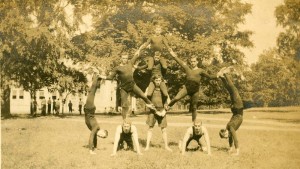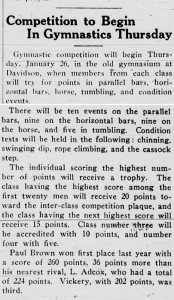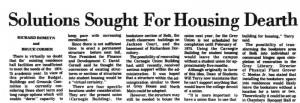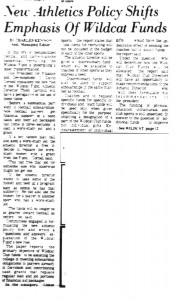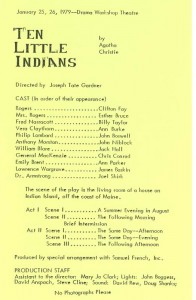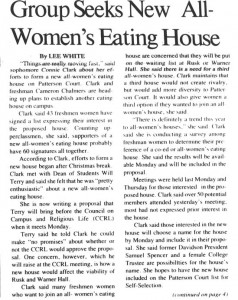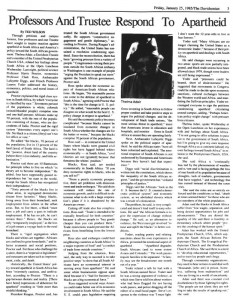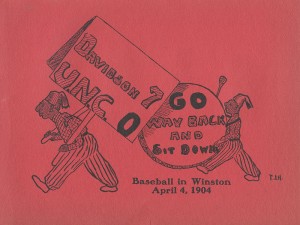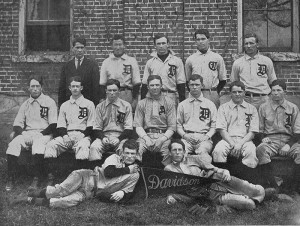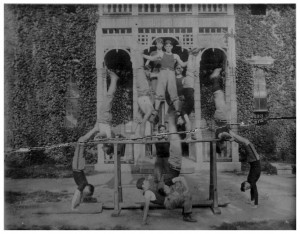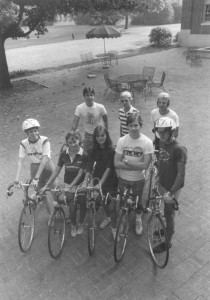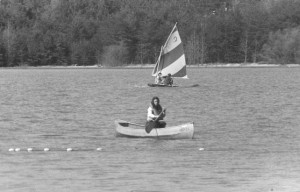1837-2012 ◊◊ Celebrating Davidson’s 175th anniversary
1912– Faculty grants permission to the Gymnastic Team to make trips away from Davidson under the usual restrictions and provided financial arrangements for such trips are satisfactory to the Professor of Physical Culture.
They also appointed a faculty committee “to recommend to the Faculty some recommendation to make the Executive Committee regarding the improvement in the mode of financing the Athletic Association. [Note: In 1893, the students organized the Davidson College Athletic Association. With the help of annual student dues, this organization financed all of Davidson’s athletic teams. By 1905, every student was a member of the Athletic Association and had to pay $5.00 a year for which they received free admission to all athletic events. During these early years, the students had complete control over the finances of the athletic teams and were responsible for hiring their own coaches.]
1933 – Davidsonian headlines -Annual Pan-Hellenic Dances to Be Featured by Kassel’s Orchestra [Note- Davidson fraternities used the term “pan-hellenic” for a number of years before changing to “Interfraternity Council.” The change was prompted by the use of pan-hellenic by sororities.]
Competition to Begin in Gymnastics Thursday
Forty-five Men Report for Football Practice.
1974– Davidsonian headlines – Solutions Sought for Housing Dearth
New Athletic Policy Shifts Emphasis on Wildcat Funds [Note -62 years later athletic funding is still news]
SGA Examines Registration
1979 – The Theater Department premieres the student workshop production of Ten Little Indians.
1985- Davidsonian headlines – Group Seeks New All-Women’s Eating House
Davidson Rescue Always Ready
Professors and Trustee Respond to Apartheid
